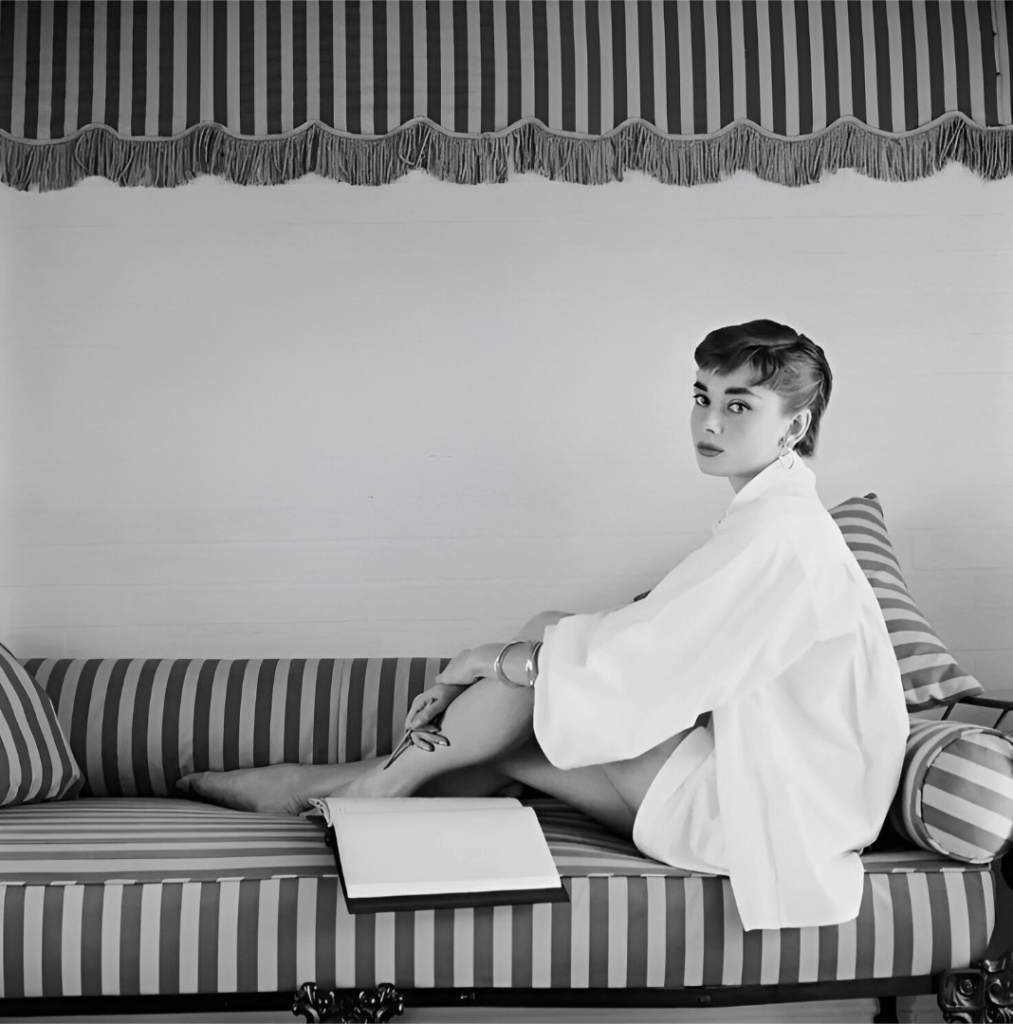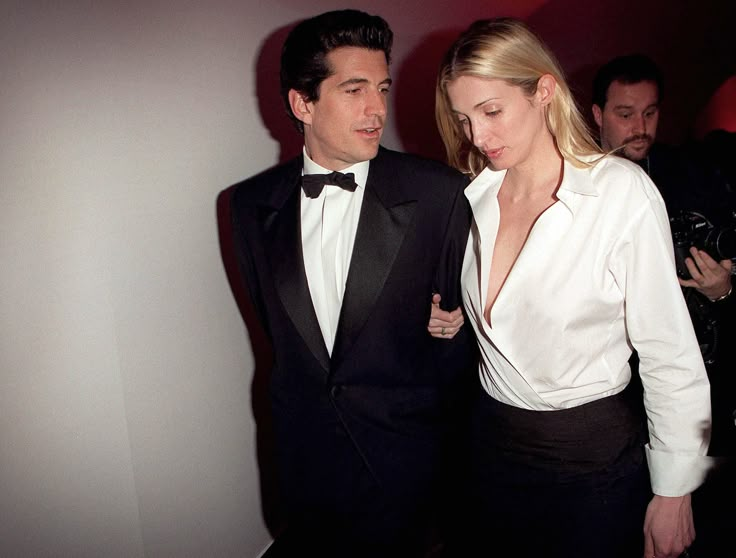
Audrey Hepburn. Her name already sounds like an elegant whisper in the middle of chaos. No one ever says “Audrey” with a loud voice — it’s as if we all instinctively know: this isn’t someone you shout about. Audrey was the kind of woman who walked into a room without announcing her arrival — and yet, somehow, everyone noticed. An icon, yes — but not the obvious, pre-packaged kind wrapped in catchphrases and doll dresses. Audrey was infinitely more complex than the image Hollywood tried so hard to sell. And that’s exactly where the real lessons — the ones no one talks about — begin.
This piece is an invitation to go beyond the silhouette of Givenchy in Breakfast at Tiffany’s. It’s for those who already understand that true elegance isn’t stitched into clothes — it’s found in gesture, in silence, in discipline. Shall we?
1. Audrey Understood That Presence Is Built in Silence, Not Excess
Audrey never needed plunging necklines, militant speeches, or red carpet theatrics. She knew that what makes you unforgettable isn’t how much space you occupy — it’s what you leave behind when you walk away. That’s the difference between being at the center and having presence.
Look closely: Audrey rarely gestured excessively. Her movements were restrained, graceful, almost as if she was aware of every muscle in her body. And no, it wasn’t affectation — it was intention.
There’s an old clip of her walking down a hallway beside Gregory Peck. She isn’t “trying” anything — and yet, he disappears. It’s as though the space around her understood there was something sacred passing through. And darling, you can’t buy that — not even with a black Amex.
2. She Proved That Vulnerability Is More Seductive Than Control
There’s a scene in Sabrina (1954) where she simply looks. No long speeches, no dramatic outbursts. Just a gaze. But in that look lives the entire universe of a woman who loves with fear, feels with softness, and dreams beyond what she’s been given. And that — that undoes us.
Audrey didn’t hide behind a flawless image. She cried on camera with sincerity. She feared not being good enough. She suffered from anxiety. And that didn’t make her less iconic. On the contrary — it made her human.
Of course we remember Holly Golightly. But it’s in the real-life interviews — the trembling voice, the misty eyes — that we see the true power of disarmed sweetness. And here’s perhaps the most revealing point: Audrey had real, deep insecurities. She didn’t think she was beautiful. She had hang-ups about her nose, thought she was too thin, constantly compared herself to other “glamorous” actresses. What the world saw as ethereal, she often saw as inadequate. Which makes everything all the more touching — because even with doubts, she chose gentleness.
She showed us that an enchanting woman isn’t one who lacks insecurity — she’s the one who refuses to let it define her.
3. She Didn’t Dress for the Moment — She Dressed for Eternity
Audrey was living proof that style has an expiration date when it depends on trends. Her silhouette was timeless because her gaze was timeless. She didn’t costume herself as a “fashion icon” — she simply dressed with precision, simplicity, and a healthy dose of disdain for excess.
Black and white. Tailored trousers. Pencil skirts. Sunglasses that covered half her face and yet somehow revealed more. Her wardrobe choices didn’t scream status — they whispered consistency.
Can you picture 1961 Audrey in a 2025 room without looking out of place? Because she’d still be the best-dressed woman there. As always.
4. Audrey Knew How to Say No Without Raising Her Voice
Few people know this, but Audrey turned down countless roles. She said no with elegance — no memes, no open letters, no door slamming. Simply because she knew who she was and what she wanted.
In a time when women are pushed to “do it all and be it all,” Audrey reminded us that true strength is discreet. She declined projects that didn’t honor her essence. She was selective. Strategic. Not out of arrogance, but out of self-respect. And that, today, would be considered revolutionary.
5. She Knew the Difference Between Beauty and Charisma — and Cultivated the Latter
Audrey had a beautiful face, of course. But the world is full of beautiful faces. What made her eternal was magnetism. Charisma isn’t something you learn from a YouTube tutorial. Charisma is felt. And she knew that.
She looked at her interviewers. She listened. She spoke with pauses. Never interrupted. She had an aura — a quiet blend of kindness, melancholy, and intelligence. A kind of energy that doesn’t impose — it offers.
Today, we confuse charisma with performance. But Audrey reminds us that true magnetism stems from truth. From attentiveness. Especially from attentiveness.
The truly captivating woman isn’t the one trying to hypnotize — she’s the one who does it effortlessly.
6. She Turned Fragility into a Visual Language
Audrey never hid her thin frame or her soft voice. She didn’t try to seem larger. Or “powerful.” She was light, delicate, fragile — and that’s precisely what made her unforgettable.
There’s a cultural obsession now with the image of the indestructible woman. The strong woman who never feels, never yields. Audrey did the opposite: she seduced with softness. She used lightness as an elegant contrast to a brutal world. And that’s why no one could remain indifferent to her.
As Truman Capote once said, she was a creature from another time. But maybe that’s exactly what we’re missing today: an aesthetic that doesn’t shout empowerment — one that whispers femininity.
7. Audrey Knew That True Beauty Is an Act of Generosity
Few people know that Audrey spent the last years of her life working as a UNICEF ambassador. She traveled to war zones. Held children in refugee camps. Carried sacks of food on her shoulders.
She — who could have spent her days sipping champagne in a garden of peonies — chose instead to meet pain where it lived. And that didn’t make her less elegant. It made her elegance deeper. Richer. More human.
Audrey taught us that the truly beautiful woman is the one who turns her softness into presence. Who understands that aesthetics without ethics is just packaging. That beauty, in the end, is a way of looking at the world with tenderness.
And perhaps that generous gaze had deep roots: Audrey experienced hunger during World War II as a child in occupied Holland. Scarcity didn’t just shape her body — it shaped her worldview. She truly knew what it meant to need. And maybe that’s why she never took giving for granted — whether it was a smile, a meal, or her public image.
Epilogue: What Remains When the Camera Stops?
Audrey didn’t become an icon by accident. And it wasn’t just because of the dresses. It was because of everything she didn’t show: the deliberate silence, the restrained gesture, the softly-spoken “no,” the choice to step back when the world demanded a scandal.
She taught that the truest form of luxury is staying faithful to yourself — even when no one’s watching. And that maybe the most powerful way to be remembered is to never try too hard to be unforgettable.
In a world that shouts, she remains the most elegant whisper in pop culture. And as a young woman myself, I can say: what moves me most about Audrey isn’t the films, the gowns, or the nostalgic sighs — it’s her unwavering loyalty to her own center, even when everything around her demanded a performance.
We grow up being told we must be everything, all the time. Beautiful, but not shallow. Strong, but not aggressive. Sensitive, but not too fragile. And somewhere in this schizophrenic script of expectations, Audrey shows up like a breath of fresh air. A reminder that maybe true elegance is knowing exactly who not to be. That maybe the most revolutionary thing we can do in our twenties is refuse to lose ourselves trying to please.
Audrey didn’t please. She enchanted. And the difference between the two is immense.
If you’ve made it this far, it’s probably because you also sense there’s more behind the word “elegance.” Maybe because deep down, you also know: true class can’t be taught — but it can be learned from those who lived it.
And that, darling, no one tells you.
But now you know.
And if you’re ready to take the next step on your journey toward becoming unforgettable — not just in how you dress, but in what you embody — I invite you to explore my eBook 7 Habits of a Truly Elegant Woman. It’s straightforward, rich, and designed for women who don’t just want to look refined — but to be.
Click here to get the eBook and start cultivating a presence that speaks before words ever do.
(And don’t worry — no one-size-fits-all formulas. Just elegant truths and habits that truly transform.)
